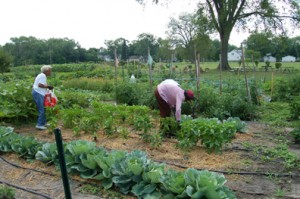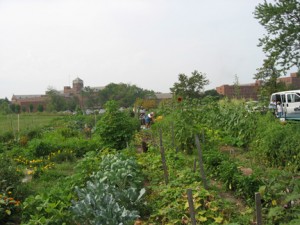River Street Neighborhood: Changes in the Physical and Cultural Landscape 1863-1970
Group Members: Angie Davis, Clete Edmunson, Jena Herriott, & Ellen Matthew
Our group solidified rather quickly because of our mutual curiosity about the River Street neighborhood located in Boise. None of us knew much more than that the neighborhood had at one point included several African-American families. Since that is no longer the ethnic make-up of the neighborhood, we wondered how it had changed and for what reasons. Some topics of interest included; community life, segregation, racism, economic opportunities, and push-pull factors of moving in and out of the community. Our group decided to focus on the diversity of River Street, and how the neighborhood changed due to enviornmental factors and business opportunities for residents. Our objectives were to see how the neighborhood transitioned with each new phase of the city. For instance we were able to see the effect the railroad and irrigation projects had on the neighborhood and how it changed River Street. Our learning objectives were met through the use of oral histories, maps, photos, newspaper articles, archives, and working with local museums.
At the start of the process, the timeline for our project included several weeks for information gathering. That turned out to be a great idea since we began to see how much the neighborhood had changed. Our first idea had been to cover the years 1890 to 1970, but we bumped it back to 1863 to include the earliest white settlers who homesteaded in that area along the river. At the Idaho State Historical Society Research Center we found photos and newspaper clippings. Our group found information online and we gained access to research already completed about the neighborhood by others. We researched at the library and checked out books to share. We learned about many different roles the neighborhood played in Boise City history.
After gathering our research, we then narrowed down the topics based on interest and sources available to us. In order to keep focued, we chose a selection of individuals and families to highlight. Their lives and experiences reflect the social, economic and political themes which played roles in the changing neighborhood over the years. The families we focused on also reflect the diversity in the River Street neighborhood. In addition, their jobs or career choices reflect the opportunities available at the time.
Each of us chose what we wanted to work on in more depth and it seemed like an even distribution of work. Angie completed research on historical maps and took the lead with the technology component, Clete researched the effect of the railroad and diversion dams/canals, Ellen and Jena researched the people/houses/business of the River Street neighborhood. We met on several occasions and used e-mail to pass information back and forth. Our group also met at the library and archives to share information and find images for our project. We were also able to talk after classes to check on our process and discuss what we would be working on next.
Our group completed research on-line, at the library, by contacting local museums and archives, and speaking with Boise State Professors. We learned about capturing information off microfiche on computer readers at the BSU Library. In addition, we found the digital Idaho Statesman Historical Archives through the Boise Public Library (1864 to 1922) to be a wealth of information. Our sources also include oral histories, and autobiographies.
By mid-April we started compiling photos and written text into a PowerPoint Presentation. This enabled us to organize our work, and put things in chronological order and intersperse images with text. Our original idea to learn Omeka did not happen. We chose to try a WordPress Blog instead. Our idea to include a Flickr slideshow also had to nixed because we could not get permission to put our images on Flickr. One of our problems was that we were not aware at an early date that permission was needed in order to use some of our images. Also, some of the organizations did not want to give permission for the images to be used on Flickr, however some were already posted and other websites posted images as well. Clete mentioned that his biggest challenge was acquiring top quality photos and obtaining the permission to use them. An additional challenge for the group was the technology component, and just not being as informed as we would have liked as to how to use Omeka, blogs, and/or developing an app. It is difficult as a group to chose which technology to use when we did not have experience with some of the technology and the implementation process. However, as a group we overcame challenges and completed our project to the best of our ability. We have been able to keep to our timeline and have completed a project that has been fun to work on and that we feel will be of interest to others.
The project could be expanded in a variety of ways. For example, more information about an individual, family, or additional maps may be added to the blog at any time. In addition, based on user interest, we may add more links for more information and sources. A continuing activity that may also be included is the use of a walking tour of River Street with an app. The app may expand upon some free podcasts that provide audio or visual walking tours. Some websites that provide free access include: podguides.net, podcastalley.com, and itunes.com. Other tours that may be of use include destination-specific guides, such as those found on iJourneys.com and Soundwalk.com. There is also a new iPone app titled, GPSmyCity, which offers self-guided walking tours of more than 250 cities worldwide. GPSmyCity may be used as a guide or model to create a walking tour of River Street. These apps would be great for the project because they may include sound to inform a visitor, or display a map to direct visitors to a specific building or area. In order to develop a new app, it would take time to learn the technology required, or it may be expensive to hire someone to create it for you.
The biggest mental challenge to completing the project was the technological aspect. That was really intimidating, but during the early stages it consisted of trying things out and then seeing the process and making changes. I would like to make it bigger and better, there are things I wish I could do of course, but that will just take time and experience. Thankfully the technology is getting easier for the novice; programmers have done all the work for us, we really just have to plug in the information and push a button. My advice for others is that, you don’t have to know a lot of programming languages to publish something simple online because there are valuable sources out there that will help with the process.
I think the real challenge was trying to trace or uncover histories that have been neglected. For instance, trying to find historic photos of these homes and the people who lived in them was hard because they were not taken. So we have to assume then, that it was not what the city of Boise valued, or there would have been more photos. Our group had to uncover the past of individuals through piecemeal bits of information that included; the Washington archives, the Basque museum, and from Pam Demo’s thesis for example, both relatively recent works. There was no comprehensive history for these people. (I can’t remember when the oral history project started, but I think that was the first attempt to record a first-hand account of the lives/past of those people who lived there. Completed by Osa–was the last name, but I’m not sure what the whole situation was…..) The easiest part of researching was the economic and political environment (railroad, federal works projects, etc) that helped transform the physical landscape and demographic makeup of the community there. My advice to anyone else is to follow any lead, no matter how small, because there are bits of history just waiting to be found.
Below is the link for our River Street Project
http://riverstreethistory.wordpress.com/
Bibliography
Alegria, Henry. 75 Years of Memoirs. (Caldwell, ID: The Caxton Printers 1981)
Bird, Annie Laurie. Boise, The Peace Valley (Caldwell: The Caxton Printer, Ltd., 1934).
Idaho Daily Statesman, July 9 and 28, 1887 (From Boise the Peace Valley)
Demo, Pam. “Boise’s River Street Neighborhood: Lee, Ash, Lover’s Lane/Pioneer Streets, the south side of the tracks” a thesis by Pam Demo, University of Idaho, 2006
Hartman, Hugh H. The Founding Fathers of Boise. (Boise, Idaho: H.H. Hartman, 1989)
Hummel, Charles and Woodward, Tim. Quintessential Boise: An Architectural Journey. Boise State University College of Social Sciences and Public Affairs, 2010
Idaho Daily Statesman/Idaho Statesman 1968-1910:
Zarkin, David. “Once Proud River Street Area Hosted Boise’s Cultural, Sporting Activities.” The Idaho Daily Statesman, 11 March 1968, p. 14
“Hotel Arrivals.” Idaho Daily Statesman, 11 October 1892, p.2
“Hotel Arrivals.” Idaho Daily Statesman, 1 June 1893, p.5
“A Rich Strike.” Idaho Daily Statesman, 22 July 1894, p. 3
“Notice.” Idaho Daily Statesman, 29 November 1901, p. 6
Ballgame Advertisement Riverisde Park Idaho Daily Statesman, 3 august 1902, p.5
“Past Week’s Sales.” Idaho Daily Statesman, 1 January 1903, p. 8
“Asks Divorce for Cruelty.” Idaho Daily Statesman, 1 January 1904, p.7
“Lee Case Settled.” Idaho Daily Statesman, 26 June 1904, p. 8
“Hicks Acquitted.” Idaho Daily Statesman, 23 December 1905, p.3
“Brief Local News.” The Idaho Daily Statesman, 28 February 1910
“Pioneers of Idaho Around the Festal Board.” The Idaho Daily Statesman, 2 October 1910, sec. 2 p. 6
Johnson, Richard Z., ed. Illustrated History of The State of Idaho. (Chicago: Lewis Publishing Company, 1899)
Wells, Merle. Boise: An Illustrated History. (Woodland Hills, CA: Windsor Publications, Inc., 1982)
Williams, Royce A. “Stacking the Stone”. Capitol of Light. http://idahoptv.org/productions/specials/capitoloflight/article-02.cfm
Witherell, Jim. History Along the Greenbelt. (Idaho State Historical Society, 1989)
Images
Albertson’s Library
Illustration, A Bird’s-eye View of Boise City, 1890 Special Collections, Albertsons Library (http://library.boisestate.edu/Special/Boise1890.html)
Basque Museum and Cultural Center (images):
Henry and Eustaquio “Stack” Yribar, dressed to play pala (1939)
Henry and Espe Alegria (1979)
Boise City Archives
Title: Detail of “Oregon Short Line Railroad Boise Branch” (Oregon Short Line Railroad, 1907)
Title: Detail of “Railroad through Town, Original Map” (Oregon Short Line Railroad, 1893)
Diversion Dam http://www.cardcow.com/images/set313/thumbs/card00559_fr.jpg
Fort Boise Archives, Amos Lee http://ada.idgenweb.org/ftboise/lee01fb.htm
Idaho State Historical Society (images courtesy of):
Clara and Warner Lewis Terrell Photo #81-19.5
Mr. and Mrs. Terrell Wedding photo, # 81-19.2
Bud Stevens (left) & Warner Terrell (right), Photo # 81-91.16b
Terrell Family Photo #81-19.10
Lemp John, Portrait, IHSH 430-A, Ethnic Landmarks http://www.boisestate.edu/history/cityhistorian/galleries_city/galleries_ethnic/14lemp.html
Maps, Sanborn Fire Insurance Company Collection (Sanborn Fire Insurance Company 1893-1956)
New York Canal http://t1.gstatic.com/images?q=tbn:ANd9GcRsUYBzPnTkV6pK0jbDwB0XchVvZOtul1fGG649rhjTylMdDlJA
Sears archives online: http://www.searsarchives.com/homes/images/1908-1914/1908_0115.jpg
USG archives, Map of Idaho, 1917, http://www.usgwarchives.org/maps/idaho/
Washington State University Archives & Oral Histories: Mr. and Mrs. Terrell
http://content.wsulibs.wsu.edu/flash/?aud=mrandmrswarnerterrell&img=bla
http://content.wsulibs.wsu.edu/cdm4/document.php?CISOROOT=/imls_3&CISOPTR=1075&REC=1
I-184; http://itd.idaho.gov/50.Years/I_50_Gal015.html
Projects on Boise History
Hester, Johnny. “Reinventing Boise, Changing Influences on Boise’s Growth Pattern as
Exhibited through Maps, 1863-1930” (Boise State University )http://www.boisestate.edu/history/cityhistorian/atlas_reinvent/atlas_reinvent.html#
Further Reading
http://www.boisestate.edu/history/cityhistorian/workpapers_pdf/Visions2050.pdf
http://www.boisestate.edu/history/cityhistorian/essays_city/essays_pdf/changing_river.pdf
Urban Renewal
http://www.boiseweekly.com/boise/razed-and-confused-boises-turbulent-history-of-urban-renewal/Content?oid=1713334
http://www.idahostatesman.com/2010/10/10/1373970/back-to-the-future.html

